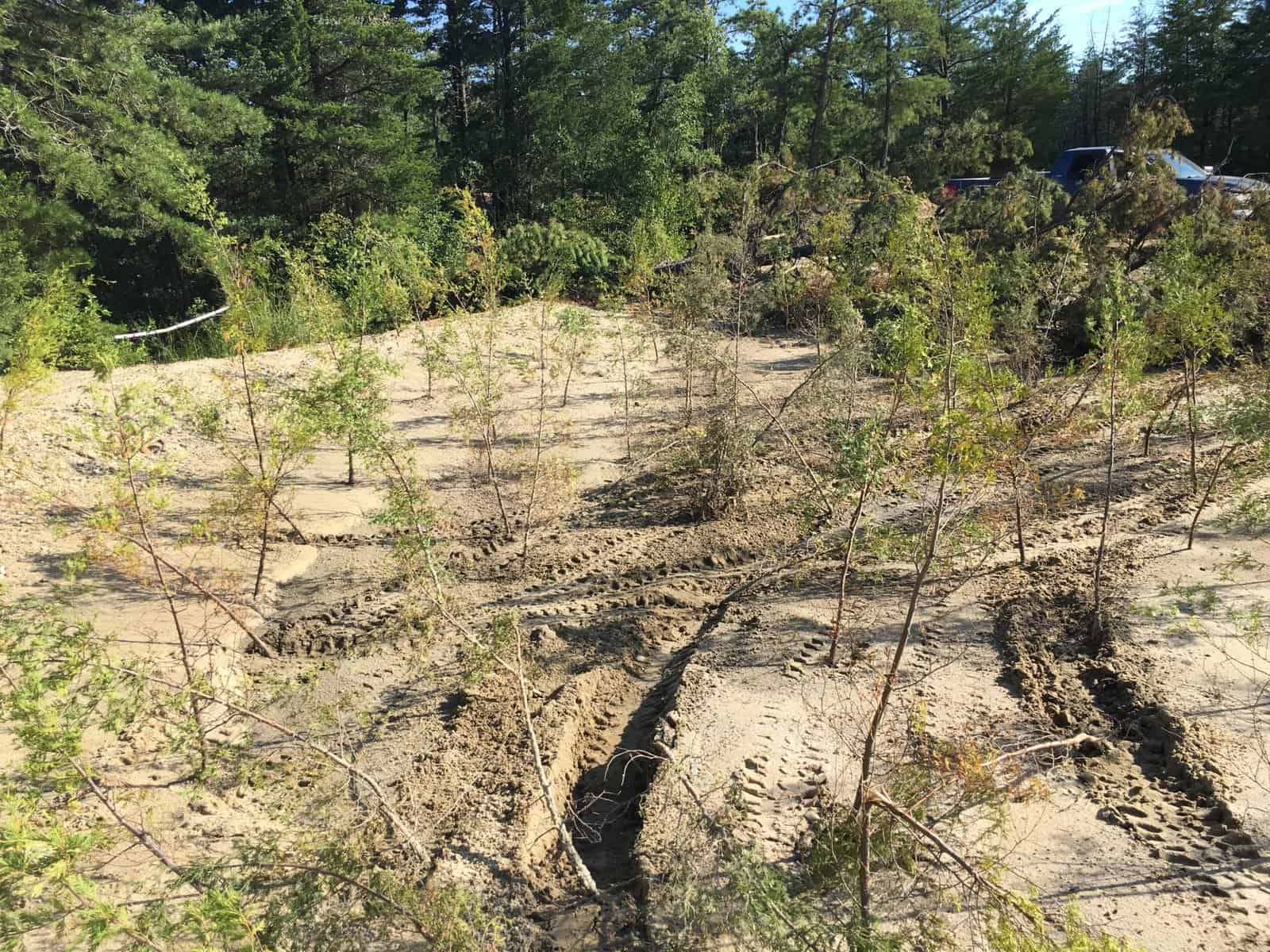By Tom Gilbert, Co-Executive Director, New Jersey Conservation Foundation
If you watch sports on television, including the Super Bowl, you’ve probably noticed the commercials for four-wheel-drive vehicles. With heart-pounding music playing, they show rugged vehicles climbing hills, splashing through streams and flinging mud from spinning tires.
To some, it must look like fun. But what the commercials don’t show is the environmental damage that occurs when four-wheelers drive in sensitive wildlife habitats. Viewers don’t see the rivers turned to mud pits, stream banks denuded of vegetation, hills rutted with tire tracks, and wildlife habitat destroyed.
Unfortunately, many places in the New Jersey Pine Barrens – especially Wharton State Forest – have become magnets for “mudders” operating off-road vehicles (ORVs) in illegal and damaging ways.
Wharton State Forest is New Jersey’s largest state forest, encompassing nearly 125,000 acres – or 195 square miles. The state-owned property gets about 800,000 visitors per year and is used for a variety of recreational activities, including touring, hiking, biking, dog-walking, fishing, swimming, kayaking and horseback riding. It includes habitat for many rare plants and animals, including iconic species like Pine Barrens tree frogs, pine snakes and Pickering’s morning glory.
Wharton is crossed by hundreds of miles of sand roads, some dating back to colonial times. It’s necessary to travel along sand roads to get to many popular spots within the forest, including historic sites. Thousands of responsible drivers do just that each year, taking care to stay on legal roads and not harm the surrounding environment.
The problem is with drivers who don’t know or don’t care. They may be a minority, but they have an outsized impact. Operating ORVs, which include powerful four-wheel drive vehicles, some riders and drivers illegally vandalize sensitive areas of Wharton by creating new roads where there were none and degrading pristine waterways and wetlands. In addition, they tear up and widen existing roads, sometimes making them impassible.
The New Jersey Department of Environmental Protection (DEP), which is in charge of the forest, has not acted with the urgency and commitment needed to address the issue. Recently, the DEP renewed the process of developing a public access plan that would protect natural resources and ensure public safety. Potential measures include a new map of the forest to clearly show legal and off-limits areas, and a permit system for driving in the forest.
At a virtual meeting on Feb. 8, the DEP released the results of a public survey on visitor and vehicle use of Wharton State Forest. According to the DEP, when respondents were asked why they visited Wharton, the most common answers were scenic driving, hiking, visiting historic sites, nature photography and day-to-day travel through the Pine Barrens.
When asked how Wharton could be made better, the top three answers were more enforcement of existing laws, better maintenance of roads, and better protection of sensitive areas. All three are excellent suggestions – but, of course, the devil is in the details. And I’m not talking about the Jersey Devil!
DEP needs to crack down on drivers who carelessly degrade Wharton’s sensitive natural resources. State Park Police need to write tickets and levy maximum fines when they have the opportunity to do so. Also, DEP needs to officially close those roads and trails that have been illegally created by drivers recklessly blazing their own paths through the forest, as well as lanes created by the Forest Fire Service in the course of fighting fires.
In addition, the DEP needs to communicate all of this information to the driving public. Signs are one way, but they can be knocked down or removed. A well-thought-out map would be better, especially if the map is available on paper and on an app that can be downloaded to drivers’ smartphones.
The majority of those surveyed said they oppose a permit system for driving through Wharton – although the question was a bit confusing because the survey did not indicate whether a fee would be charged.
Some speakers at the meeting advocated for a recreational driving pass for Wharton that could be given out free or for a nominal cost, as a way to create responsibility and accountability among drivers. If you’re given a pass to drive in Wharton, it means you’ve been informed of the mapping of legal roads and wouldn’t be able to claim ignorance. The driving pass could be revoked if rules aren’t followed.
Despite a number of speakers demanding unlimited access to Wharton, the DEP must not cater to a small group of users unwilling to follow the rules, but rather uphold its primary mission of protecting the plants, animals and natural resources that make the Pine Barrens a globally unique and important area.
As Jason Howell of the Pinelands Preservation Alliance pointed out, “There are plants and animals here that exist almost nowhere else on Earth.”
Wharton is home to some 300 bird species, nearly 60 reptile and amphibian species, and more than 90 fish species. Forty three are listed by the state as threatened or endangered, including bobcats, timber rattlesnakes and red-headed woodpeckers. Wharton also has some 850 plant species, including rarities like bog asphodels, curly-grass ferns and Pine-Barrens gentians.
The DEP is still accepting comments on the public access plan for Wharton. If you value Wharton’s scenic beauty and rare plants and wildlife, please take this opportunity to support a plan that protects natural resources. Go to https://nj.gov/dep/parksandforests/wharton/ to submit a written comment or view the recording of the Feb. 8 meeting.
To learn more about ORV damage in the Pine Barrens, see https://pinelandsalliance.org/off-road-vehicle-damage/.
And to learn more about preserving New Jersey’s land and natural resources, visit the New Jersey Conservation Foundation website at www.njconservation.org or contact me at [email protected].

